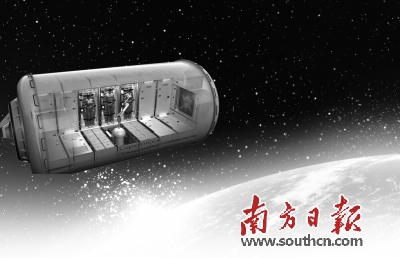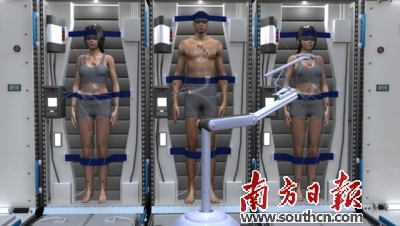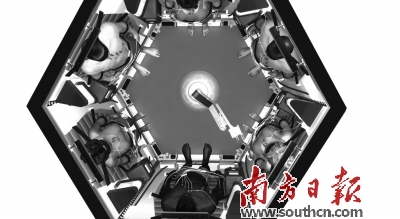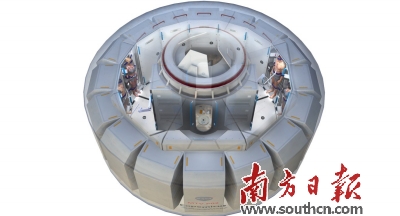NASA funds "frozen dormancy" to study interstellar travel or come true




"The earth is the cradle of human beings, but human beings cannot live in the cradle forever." This is the heroic words of tsiolkovsky, the father of modern rockets. So far, man has landed on the moon and looked at his home from another perspective. However, one big step for mankind is not far enough. The inability to support transportation and the lack of dry food supplies have restricted human beings from leaving the "cradle", realizing interstellar travel and sailing, and looking for "relatives" who go to the earth.
Of course, all this has been realized in science fiction movies — — In a series of sci-fi movies such as Avatar in Interstellar, astronauts use the technology of "freezing dormancy" to reduce the metabolism of their bodies and realize long-distance interstellar travel with less supplies. Recently, NASA officially announced that it will fund SpaceWorks in Atlanta to develop a similar "suspended animation" technology to put astronauts into a short-term frozen sleep state during the long interstellar travel.
In real space missions, the supply needed by human astronauts will have a direct impact on mission execution. Obviously, putting astronauts into a short-term frozen sleep state will make space travel go further and more efficient. ● Wang Tengteng, a reporter from Nanfang Daily in Beijing, planned and coordinated Zhang Zhichao.
1. Freezing dormancy improves the efficiency of space travel.
According to reports, during the interplanetary voyage, the frozen dormancy cabin designed by SpaceWorks will make astronauts enter an inert and numb state, that is, a short-term frozen dormancy state. In this state, the physiological activities of astronauts are reduced, usually manifested in the decrease of body temperature and metabolic rate. This will greatly reduce the astronauts’ demand for external materials, and then greatly reduce the supplies they carry.
John Bradford, CEO of SpaceWorks, said that the "suspended animation" of human astronauts has always been regarded as the best solution for long-term space flight. According to the design scheme, the sleeping cabin of SpaceWorks is very small, located near the central node or crew cabin of the spacecraft, allowing astronauts to enter and exit directly. Brad Ford said: "We believe that 4-mdash; The supply demand of six astronauts can be reduced to 5-mdash; 7 tons, not the current 20-mdash; 50 tons. The space required for the astronaut habitat is about 20 square meters, while most current designs require 200 square meters. "
When the astronauts are in a frozen hibernation state, they will be covered with various sensors, so that other awake astronauts can monitor their status at any time. Astronauts will get the nutrients needed to maintain human body function through total parenteral nutrition intravenous injection, which can be excreted with urine. Astronauts will sleep for 14 days under the low temperature induced by this drug, and then wake up for 2-mdash; Three-day shift change to meet the dormancy needs of other astronauts.
2. Cooling process or damage to cells
It can be seen that astronauts’ freezing and dormancy can maximize the space and load utilization of spacecraft. The key is to reduce the consumption of astronauts during flight, that is, to minimize the metabolic rate of the human body.
There is no doubt that low temperature can reduce the metabolic rate of living things. Animals such as frogs and snakes all hibernate to reduce their metabolic rate. However, it is worth noting that the freezing dormancy of astronauts is not the same as the "human freezing" technology used by Du Hong, a female writer in Chongqing, China. The first problem to be solved in astronaut’s freezing and dormancy technology is the damage caused by low temperature to astronauts’ life.
Technically, human freezing dormancy refers to freezing human to -196℃ in a very short time, stopping cell activity and prolonging human life cycle indefinitely. Theoretically, freezing dormancy can be done. But at present, from the technical point of view, human beings can’t freeze and sleep and wake them up. The main problem is that when the body temperature drops to -5℃, the water in the cells will freeze and form ice crystals. These ice crystals can penetrate the cell membrane and cause serious tissue damage. In other words, people who sleep through freezing will not be able to wake up again.
The mechanism of long-term preservation of cells at low temperature is that the metabolism of cells slows down rapidly at low temperature. The lower the storage temperature, the slower the metabolism and the longer the storage time. For example, the blood in the blood center is often stored at -5℃, and the storage time is generally one month. Of course, if the damage to cells caused by low temperature is not considered, the blood should be preserved for a longer time if it is stored at -196℃.
But cryopreservation itself can also kill cells and damage tissues. The SpaceWorks funded by NASA has not announced how to deal with these risks, but we might as well take a look at these risks and the current research on how to deal with them. These risks include both chemical damage and physical damage.
The main culprit of chemical damage is the oxygen we live on. Needless to say, the importance of oxygen, but its other side is to destroy the essence of life molecules through oxidative decomposition. Especially when cells actively use oxygen, they will generate a large number of free radicals which are more active than molecular oxygen. Under normal circumstances, cells use a series of enzymes to directly or indirectly combat the damage caused by oxygen and its free radicals. However, with the decrease of temperature, although the speed of destruction also decreases, the resistance ability accelerated by enzyme catalysis will also decrease sharply with the drastic decrease of enzyme activity, and the originally balanced chemical reaction will eventually fall to the destructive side. This cannot be ignored.
The second is physical damage, which mainly refers to the damage to cells caused by liquid freezing at extremely low temperature. According to the research of Liqun He, a professor at the Institute of Cryobiology, University of Science and Technology of China, the only way to achieve freezing dormancy is to treat each cell at low temperature. In practical application, the first step of cryopreservation of cells is to add cryoprotectant (CPA) to cells and then cool them safely. It is worth noting that the temperature is not low enough to meet the requirements of freezing dormancy, but -15℃— The low temperature process of -60℃ is fatal to cells.
3. The cooling process is difficult to operate.
Adding solute to water will lower the freezing point of water. Generally speaking, the higher the solute concentration, the lower the freezing point, so the first step of successful cryopreservation is to add appropriate CPA, and high concentration solute has osmotic damage to cells, so it should be appropriate. Since 50 years ago, a British research group accidentally discovered that glycerol is an effective cryoprotectant for sperm and red blood cells, although new CPAs, such as ethylene glycol, methanol, propylene glycol and dimethyl sulfoxide, are constantly emerging, and some of them are more effective, glycerol is still one of the effective CPAs.
According to Liqun He and others, the experiment shows that after adding CPA, the cells are dehydrated first, and the volume begins to shrink, then CPA infiltrates and the volume expands. If the concentration of CPA is too high, its volume will shrink excessively and even exceed the tolerance limit of cells, resulting in damage.
During the cooling process, when the temperature drops to about -5℃, the cells and transmitters around them are not frozen, and they are all in a supercooled state, at -5℃— Between -15℃, the extracellular solution begins to freeze. If it is assumed that the cell membrane prevents the ice crystals from growing into the cell, the cell is still in a supercooled state without freezing. At this time, the chemical potential of water inside the cell increases, water begins to seep out of the cell, and then freezes outside the cell, and then the reaction of the cell depends on the cooling rate. Liqun He said that if the cooling is too fast, the cells will not have enough time to maintain the osmotic pressure balance of the internal and external solutions by oozing water, so that the intracellular solutions will be too cold, and eventually the cells will start to freeze.
Generally speaking, cooling too fast or too slow can kill cells. At the slow cooling rate, the low-temperature damage comes from the "solution effect", which leads to severe dehydration of cells. Under rapid cooling, the low temperature damage is caused by deadly intracellular ice. For a specific cell, there must be an optimal cooling rate with the highest cell recovery rate. The cooling rate is slow enough to prevent intracellular ice and fast enough to minimize the "solution effect".
According to reports, in addition to the above method, there is also a cooling method to make the cytoplasm glassy at present. Using ultra-fast cooling (> 106℃/min) or using high concentration CPA, the cytoplasm will form glassy state instead of intracellular ice. However, ultra-fast cooling is technically difficult. Several CPAs that can effectively improve the cooling damage in slow cooling can also be used to promote vitrification, but the required concentration is too high and it is too toxic to cells and tissues.
It should be noted that the cooling rate is too high or too low relative to the water permeability of cell membrane and related to the type of cells. Different cells have different permeability to water, which leads to different optimal cooling rates for different cells. Think about it carefully, the human body is composed of countless cells, and there are many differences between brain cells and liver cells. It is very difficult to target these cells with drugs, and it needs precise control. If you don’t pay attention, you can cause irreversible damage to cells. Compared with the current difficulty of oocyte cryopreservation, sperm or blood, it is almost impossible to accurately cool different cells.
Whether you can wake up is the key.
However, it is more difficult than accurately cooling different cells to reheat them. If astronauts can’t wake up from hibernation, what’s the point of freezing hibernation? How to rewarming cells safely is the "last mile" and the key point of freezing dormancy technology.
As mentioned above, in the process of injecting CPA into cells to cool down, cells are easily damaged. Similarly, in the process of rewarming, CPA must be pulled out of the cell, which is also full of danger. If the CPA is excessively diluted when it is taken out, the cells will absorb too much water and expand beyond the allowable upper limit, which will also cause cell damage.
Liqun He said that whether the rewarming process poses a threat to the survival of cells depends first on whether the previous cooling process induces intracellular ice or cell dehydration. If there is intracellular ice, rapid rewarming can prevent ice crystals from growing and destroying cells. However, even if there is no intracellular ice formation during slow cooling, the response of cells to rewarming rate depends on freezing conditions and cell types.
Moreover, it is also a big problem whether the body of the astronauts after waking up will be negatively affected. When the human muscles are in a static state for a long time, their functions will inevitably deteriorate to some extent. Although the similar "suspended animation" technology developed by SpaceWorks only allows the astronauts to sleep for 14 days, I believe everyone who has experienced it knows what it feels like to lie in bed for half a month.
This edition of pictures: information pictures